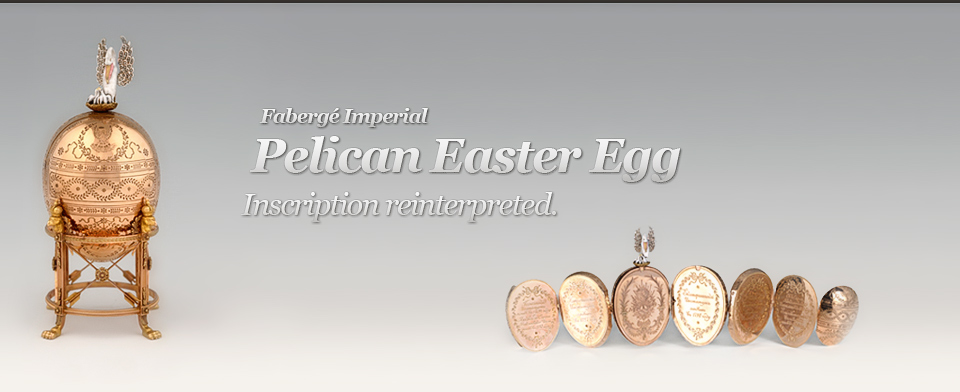Attachment I.
The Holy Scripture incorporated in the context of the egg brings up another aspect in the interpretation of the design and makes the Imperial Pelican Easter Egg even more special to the heritage of the House of Carl Fabergé.
According to Henry Charles Bainbridge[15], the Craftsman, as he called Carl Fabergé, never confused symbolism of the egg with that of the cross. Indeed, these were always of the earth, earthy, as you may see from the 'surprises' contained within the eggs – a coronation coach, a Siberian train, miniatures of the Imperial family, a basket of spring flowers, a strutting peacock, a gliding swan, and so on[16] except three.
Apart from the Pelican Easter Egg, the 1915 Red Cross Egg with Triptych shows Christ's Harrowing of Hell, and the Resurrection Egg[17] depicts the crowning event of the Scripture, the scene of the Transformation of Jesus Christ. This last egg is not Imperial, i.e., it was not acquired by the Tsar. It was perhaps a private present. It can be seen in Maria Feodorovna's vitrine at the 1902 exhibition in the von Dervis palace.
Surely there were important reasons why Fabergé, who never invested these [eggs] with celestial meaning[18], made exclusions for these particular cases. This deserves a separate investigation.
